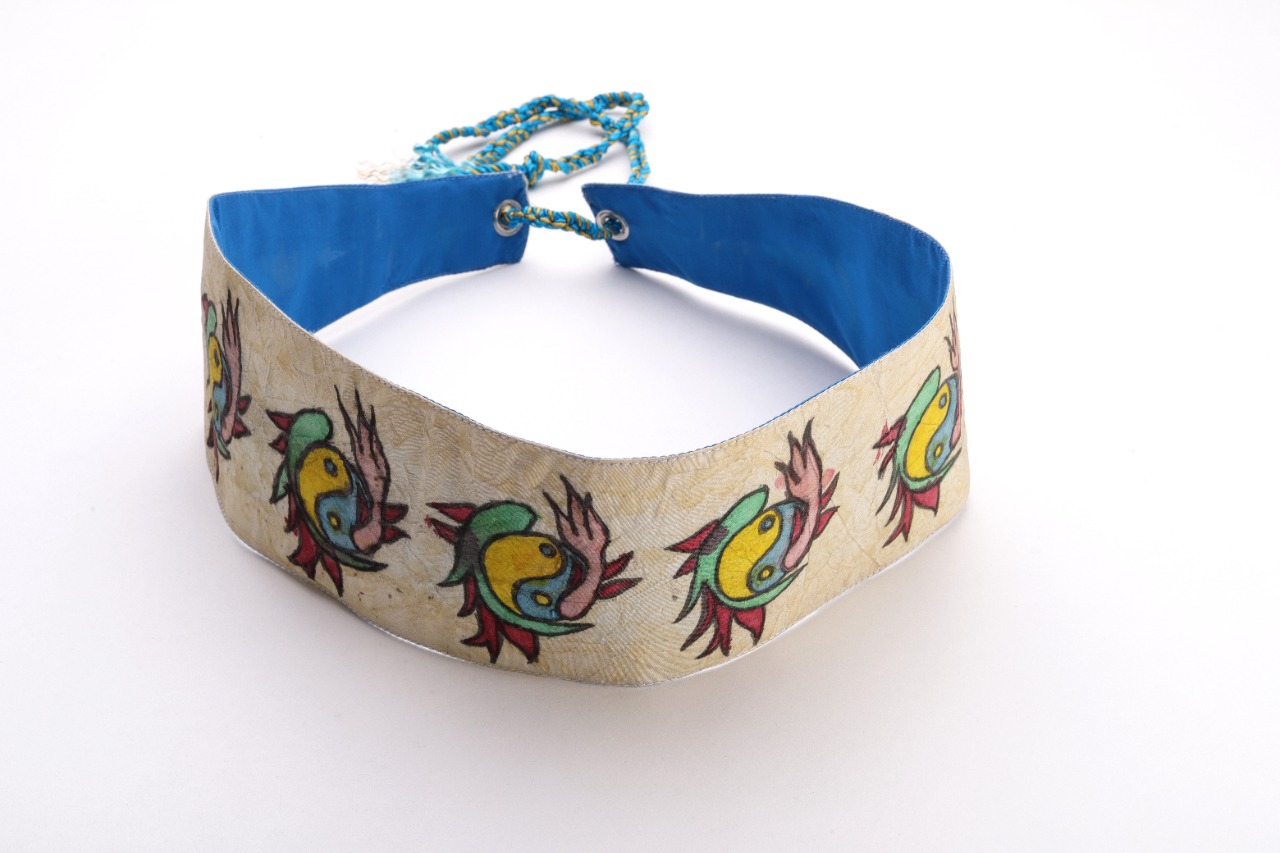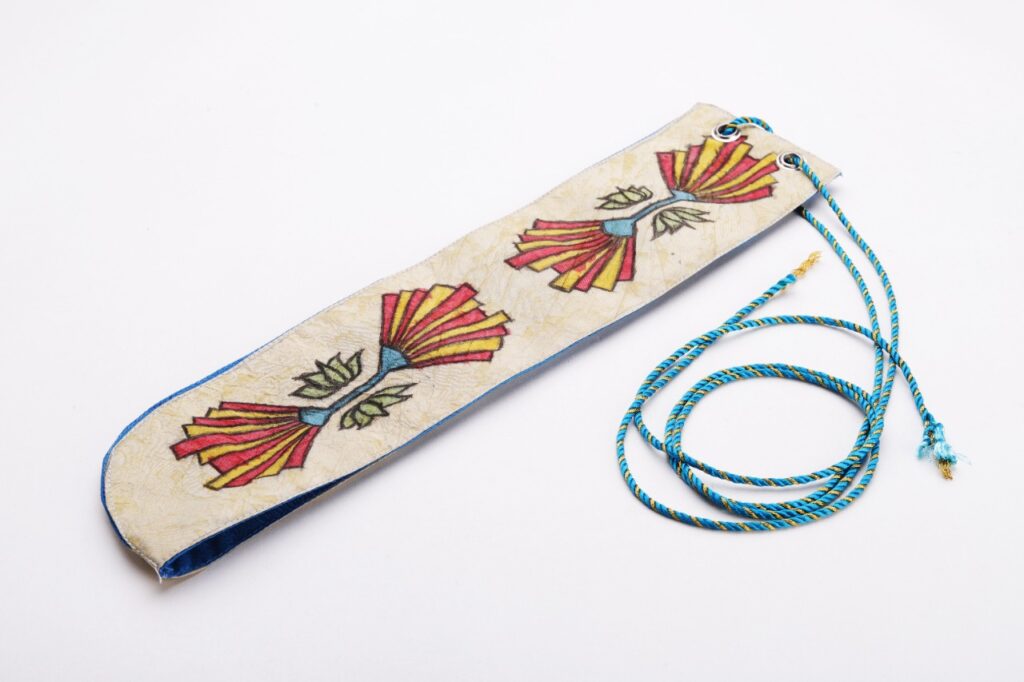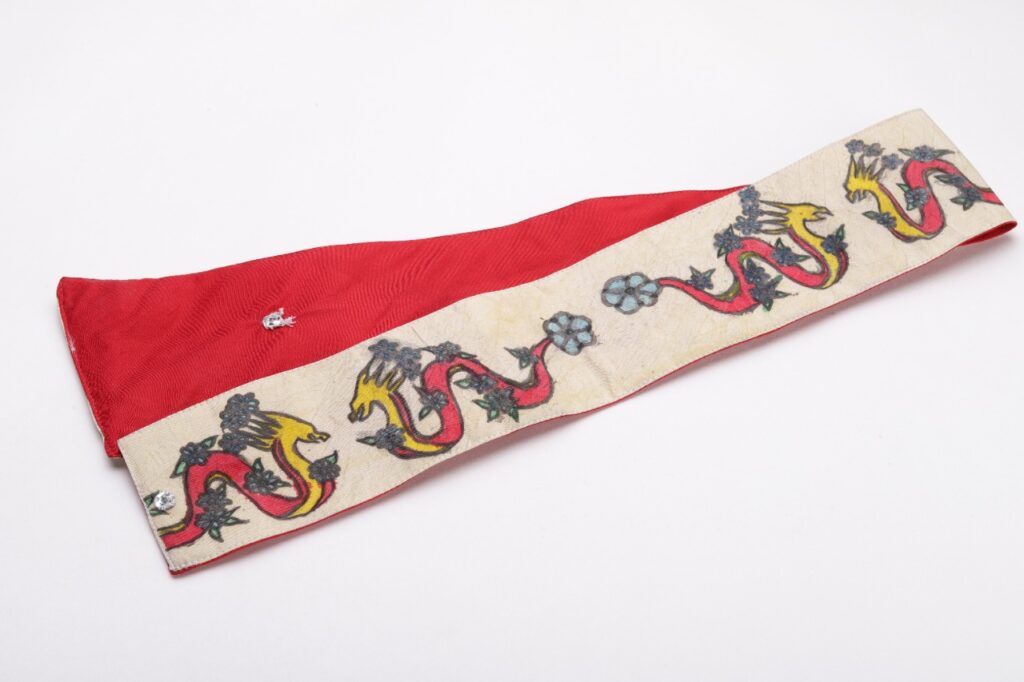
Design & Development of Kalamkari Belts using Chinese Motifs
Kalamkari is a type of hand-painted textile produced the Indian state of Andhra Pradesh. Accessory is an item used to contribute, in a secondary manner, to an individual’s outfit. Accessories are often chosen to complete an outfit and complement the wearer’s look. They have the capacity to further express an individual’s identity and personality. Accessories come in different shapes, sizes, hues, etc. The term came into use in the 20th century. The accessories are classified into headgears, foot wears, handbags, belts and glove. Among these, belt is an accessory which has been since ages used for functional and decorative purpose.
A belt is a flexible band or strap, typically made of leather, plastic, or heavy cloth, worn around the natural waist.

Belts are made out of variety of fabrics which ranges from natural to synthetic, plain to printed. In today’s trend it is observed that these belts are used on casual and formal categories of clothing by everyone irrespective of age, personality and gender. The art of Kalamkari is known for its natural colours and free hand style of painting using pen like tool. The fabric is considered spiritual because of the motifs that are taken from epics and images of God and goddess. The uniqueness of Kalamkari is the motif and the natural colours.
Chinese motifs symbolize happiness, wealth, and long life. These motifs have a greater significance in the textile design, and it is also used in the interiors to bring prosperity, luck and charm. Keeping this in mind, the topic of developing Kalamkari belts using Chinese belts were taken up for the study.
The aim of the study is to Design and develop Kalamkari belts using Chinese motifs.
The objective of the Study is –
- To learn the traditional art from the traditional artisan from kalahasti.
- To understand the natural dyes and pigments and choice of materials used in the traditional style of Kalamkari.
- To learn the traditional art and work towards a product development.
- To select material, motifs and the final end product and complete it with design application.
- To conduct an acceptance study to know the preference of the designed product.
The methodology of the study is categorised as 3 phases where phase 1 speaks about the observation and study of the Kalamkari art and exploring it practically. Phase 2 deals with the design development process which includes choice of fabric, colour, motif, placement of motif, application of Kalamkari, designing of belts, construction and finishing of belts. Phase 3 is where the acceptance of the designed belts was checked based on the survey method. The survey was conducted among 31 women among age group 18-27.

The result of the study is discussed below:
- When it comes to awareness almost 89% of the respondents were aware of the art and they are commonly seen on dupattas, saris, kurtas and accessories respectively.
- Kalamkari on accessory is a new concept and for the majority of the respondents felt that they have not seen accessories in Kalamkari.
- It is interesting to know that the idea of traditional Kalamkari on belts was a new idea and liked by 90% of the respondents.
- Majority of the respondents liked the choice of the fabric to be silk
- Design 3 was preferred by majority of the respondents for choice of motif.
- Design 4 was preferred by majority of the respondents for choice of colour combination.
- Majority of the respondents have appreciated the choice of technique and technique of painting.
- Design 4 was preferred by majority of the respondents for the style of belt.
- Design 4 and 5 was affordable and preferred by majority of the respondents for its reasonable price.
- Design 1 was preferred by majority of the respondents for its overall appearance.
From the study it can be concluded that Design 1 irrespective of choice of motif, choice of colour combination, design development of belt and cost was preferred by majority of respondents. This study also explains that these kinds of traditional arts can be revived on the trendy styles so that this traditional art of India will be a classic in fashion.
If you care to learn further about how workshops are structured at LISAA School of Design, please click below to get in touch with our team.